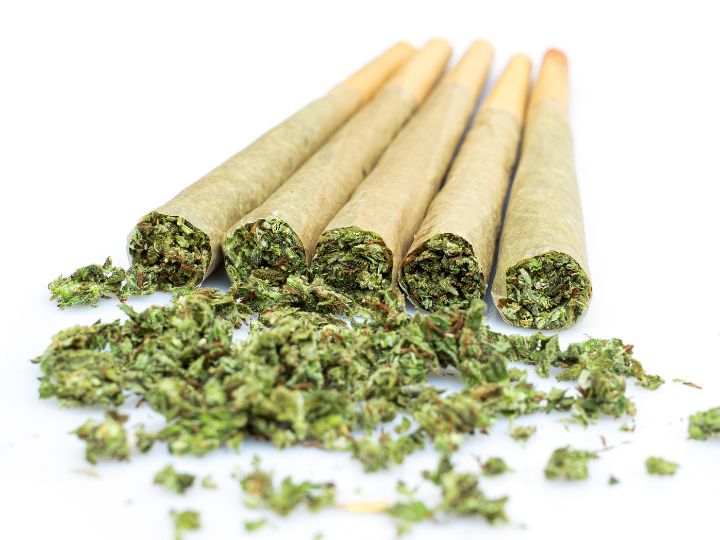Cannabis is one of the most widely used psychoactive substances globally, but not all forms of cannabis are the same. Two popular variants are weed (marijuana) and hash (hashish), which differ significantly in potency, consumption methods, and effects on the mind and body.
Understanding these differences is important. Not only for recreational users but also for those who might be struggling with substance use and considering treatment options.
In this article, we’ll explore the key distinctions between hash and weed, their impact on health, and what that means for addiction potential and recovery.
What Is Weed?
Weed, commonly referred to as marijuana, consists of the dried leaves, stems, and flowers of the cannabis plant. It contains cannabinoids like THC (tetrahydrocannabinol), which produces the “high” sensation users experience. The typical THC content in weed ranges from 10% to 25%, although some strains have higher levels.
People most often consume weed by smoking it in joints or pipes, vaping, or using edibles infused with cannabis extracts. It is widely available in states or countries where cannabis is legalized for medicinal or recreational use, but remains illegal federally in many places.
What Is Hash?
Hash, short for hashish, is a concentrated form of cannabis made from the resin glands, called trichomes, found on the cannabis plant. These resin glands are collected and compressed into blocks or balls, resulting in a product that is much more potent than regular weed. Some forms of hash are sticky and oily, while others are dry and crumbly.
THC levels in hash can vary widely but are often between 20% and 60%, making it substantially stronger than most weed products. Users typically smoke hash mixed with tobacco or cannabis, vape it, or “dab” it using specialized equipment for vaporizing concentrates.
Potency: Why It Matters
The key difference between hash and weed is their potency. Because hash is a concentrated resin, it packs more THC into a smaller amount of product, leading to stronger and longer-lasting effects.
Higher potency means a stronger “high,” but it also comes with increased risks. Stronger THC exposure can lead to intensified anxiety, paranoia, or hallucinations, especially in inexperienced users or those with mental health vulnerabilities.
Moreover, research suggests that high-potency cannabis products may increase the likelihood of developing cannabis use disorder, a medical term for addiction.
Usage and Accessibility
Weed is generally more accessible and easier to use, with a wide variety of strains and consumption methods. Hash requires more processing and equipment for some methods like dabbing, making it less accessible for casual users but popular among experienced consumers seeking a more intense effect.
Legality also plays a role: some regions allow weed but have stricter rules for hash or other concentrates. This can influence what products people choose and how they consume cannabis.
Effects on the Mind and Body
Both hash and weed affect the central nervous system by interacting with cannabinoid receptors in the brain. Typical short-term effects include:
- Euphoria and relaxation
- Altered perception of time and space
- Increased appetite (“the munchies”)
- Dry mouth and red eyes
- Impaired memory and coordination
Because hash is more potent, these effects tend to be stronger and can appear more quickly. In some cases, especially with high doses, users may experience anxiety, panic attacks, or psychotic-like symptoms.
Long-term use of high-potency cannabis products has been linked to memory problems, reduced motivation, and increased risk of mental health disorders such as depression and schizophrenia.
Addiction Potential and Mental Health Risks
Cannabis use disorder (CUD) affects an estimated 9% of people who use cannabis, but the risk rises with frequent and high-potency use. Hash, due to its stronger THC content, can contribute to a quicker development of dependence and withdrawal symptoms, including irritability, sleep disturbances, and cravings.
Mental health risks also increase with potency and frequency of use. People with a history of anxiety, depression, or psychosis may find their symptoms worsened by regular consumption of hash or weed, highlighting the importance of medical guidance and monitoring.
Treatment and Recovery
If you or a loved one is struggling with cannabis use, whether hash or weed, help is available.
Treatment often involves counseling approaches such as cognitive behavioral therapy (CBT), which addresses triggers and coping strategies. Support groups and medication-assisted treatments may also be recommended depending on the severity of the addiction.
Recognizing the type and potency of cannabis used helps therapists tailor recovery plans to better support long-term sobriety and mental well-being.
Conclusion
While weed and hash both come from the cannabis plant, their differences in potency, usage, and effects are significant. Hash tends to be more concentrated and potent, leading to stronger highs but also greater risks for addiction and mental health problems.
Understanding these differences is crucial for anyone using cannabis or supporting someone who is. If cannabis use is affecting your life or health, seeking professional help can lead to effective treatment and recovery.
At Premiere Addiction Recovery, a drug rehab in Florida, we’re here to guide you every step of the way.
Need help with cannabis addiction? Contact Premiere Addiction Recovery today for a confidential consultation and personalized treatment options.


